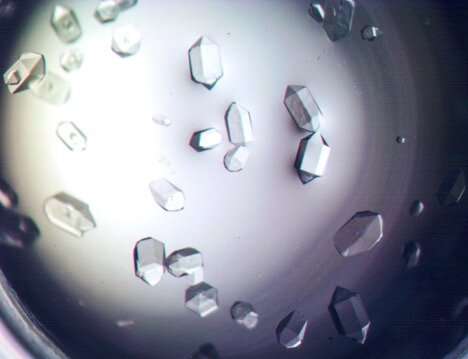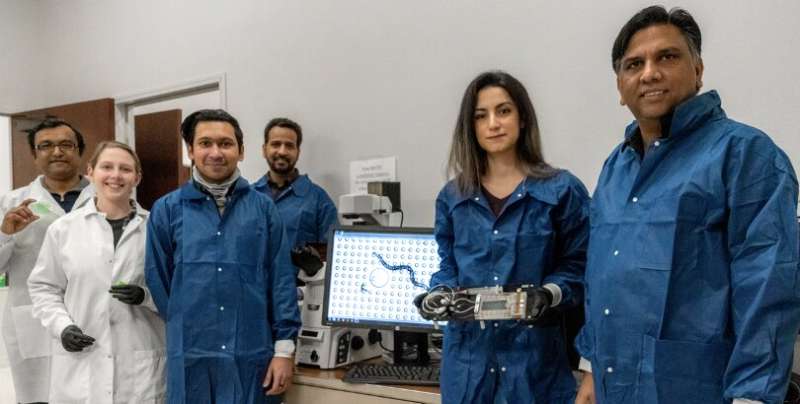Meet Caenorhabditis elegans, a 1-mm roundworm that shares a common trait with humans: muscle. Long space voyages present a unique challenge to astronauts: loss of muscle mass and strength. Can this tiny worm provide clues regarding how to mitigate this risk? The Micro-16 project will use this roundworm to see whether decreased expression of muscle protein is associated with decreased strength. The research team developed a new device that will measure muscle strength over multiple generations of worms that will be born and raised on the space station.
Phase II Real-time Protein Crystal Growth Investigation
One of the ways scientists develop new drugs to fight disease is to use a process called protein crystallization which takes place when individual protein molecules are stabilized by crystal contacts. These crystals can grow differently in microgravity conditions than they do on Earth, producing a higher quality crystal. Real-time Protein Crystal Growth-2 on the space station is designed to demonstrate new methods for producing these high-quality protein crystals. Eight different proteins will be incubated on special growth plates inside the BioServe Space Automated Bioproduct Lab at precisely controlled set temperatures. At different times during incubation, the plates are removed and placed on the BioServe's TS-100 microscope to locate and image any crystals that form. These images will then be used by the experiment's principal investigators to design the next iteration of protein growth conditions.

Think about what you might include in your next salad: some lettuce, Pac Choi, radishes, tomatoes, cauliflower, and a few peppers. A nutritious dish for you or any astronaut. But can these veggies grow and thrive in an extraterrestrial greenhouse if they're exposed to too much radiation? That's the driving question to the MISSE-Seed Experiment: to study the effects of long duration space exposure on crop seeds. For six months, eleven seed varieties will be exposed to the space environment outside the space station at the Materials International Space Station Experiment (MISSE) sample carrier's Zenith position. The project will also examine a number of passive sample containment vessels to ascertain what type of storage units are optimal to preserve seeds or other biological samples during exposure to the space environment.
As Craig Kundrot, the division director of the Biological and Physical Sciences Division noted: "After the Cygnus spacecraft delivers its cargo, the big ideas that will emanate from these experiments will help give us the knowledge we'll need to inhabit the Moon, Mars and beyond. At the same time, they'll change what we know about biology and physical science on Earth, helping us find new ways to feed and improve the health of the world's growing population."
Explore further



